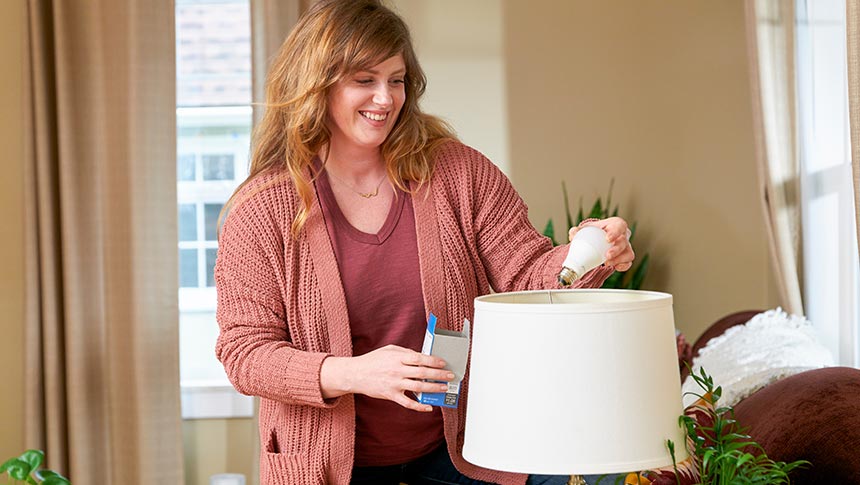Light your home for less with LED bulbs
Lighting Updated: February 23, 2023Using energy-efficient light bulbs is an easy and affordable way to reduce electricity costs.
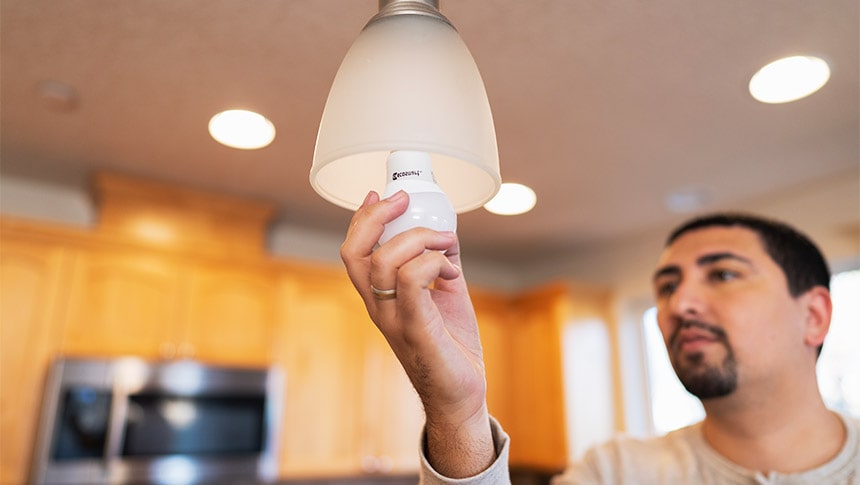
Using energy-efficient light bulbs is an easy and affordable way to reduce electricity costs.

Today’s LED bulbs are up to 85% more efficient and last 15–25 times longer than traditional bulbs. They also come in a variety of shapes, sizes and color tones to meet virtually any lighting need. Simply put, LED bulbs are the most effective and energy-efficient way to light your home.
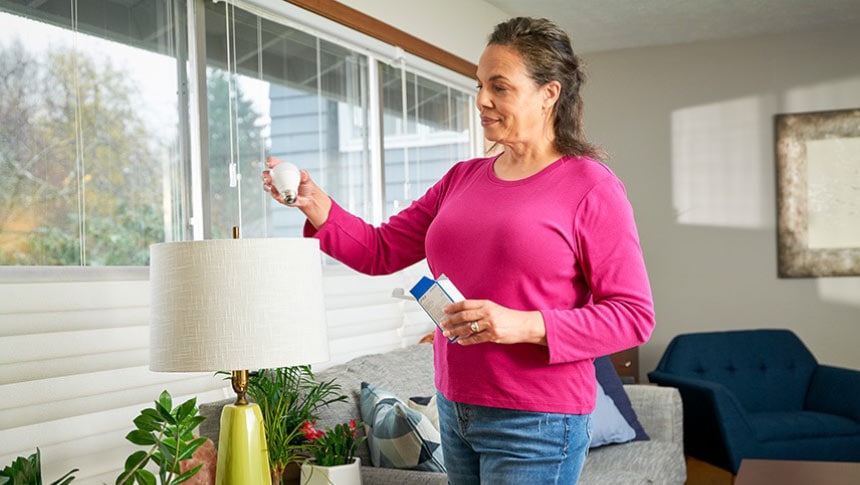
Look for the ENERGY STAR® label to know that you’re getting a top-quality bulb that’s independently certified and tested to save energy and perform as promised. Choosing the right LED bulb for the job depends on your needs, the room your lighting and the specifications of the bulb. Here are some considerations to keep in mind.
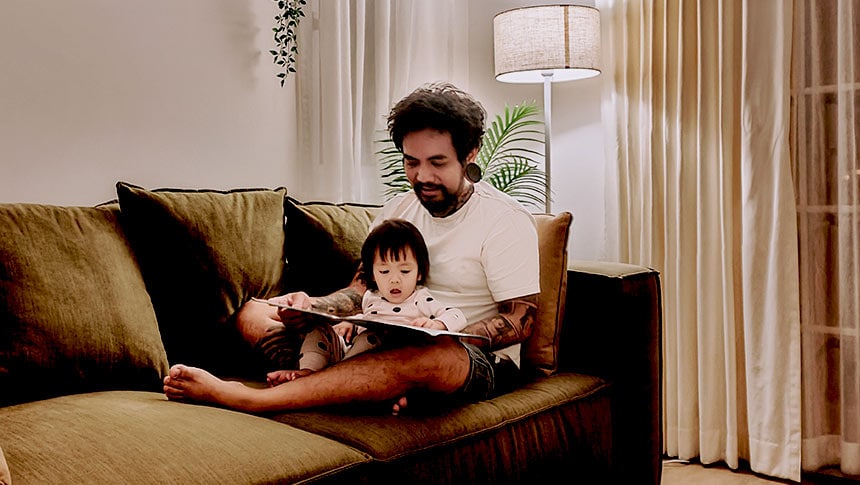
First, it’s important to know the difference between wattage and lumens. Wattage is often thought of as the measure for light bulb brightness, but watts only measure a bulb’s energy use. Brightness is measured in lumens: the higher the lumens, the brighter the light. A 10-watt LED provides the same 800-lumen brightness as a 60-watt incandescent.
The table below shows a wattage and brightness comparison between traditional incandescent bulbs and their LED bulb equivalent. This information is also typically featured on the bulb’s packaging.
| Incandescent Bulb (Watts) | LED Bulb (Watts) | Brightness (Lumens) |
|---|---|---|
| 25W | 3-5W | 250 lumens |
| 40W | 6-9W | 450 lumens |
| 60W | 8-15W | 800 lumens |
| 75W | 12-17W | 1,100 lumens |
| 100W | 15-19W | 1,600 lumens |
| 125W | 20-25W | 1,850 lumens |
| 150W | Up to 30W | 2,600 lumens |

You can find LED bulbs in a wide range of colors and light levels, from warm to cool. Light appearance is measured in Kelvin, with warmer light having a lower K and cooler light having a higher K. Soft amber and yellow light (2,200K–2,700K) works well for bedrooms and living rooms. White light (3,000K–4,100K) is ideal for work areas and kitchens, and bright light (5,000K–6,500K) is best for focused task areas and reading lights.
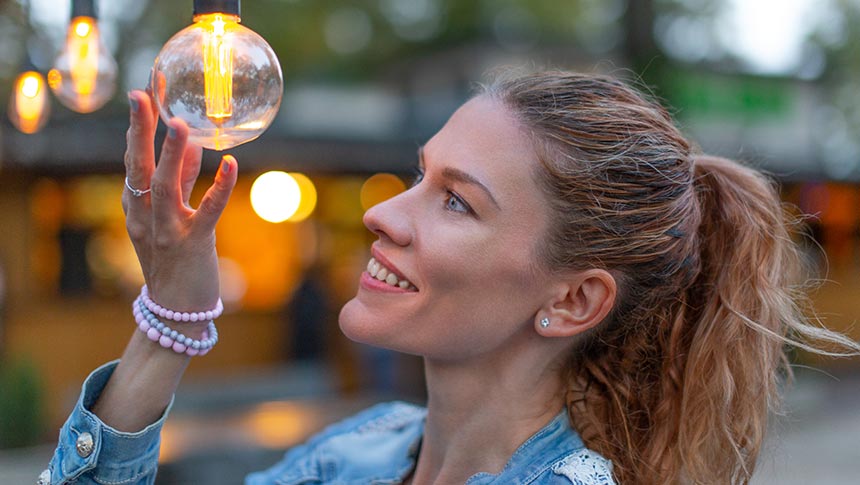
LED bulbs come in many shapes and sizes to fit different light fixtures. For example, you can use standard A-shaped bulbs for table or floor lamps, reflector bulbs for track lighting and recessed cans, globe bulbs for bathroom vanities, and candle-shaped bulbs for a dining room chandelier. Our bulb finder is a helpful resource.

LED bulbs are also available with enhanced technology. Specialty features may include dimming, motion sensing, photo sensing, color changing and smart connectivity. Dimmable bulbs bring ambience to any space and save energy when full brightness isn’t needed. Motion sensor bulbs turn on and off when there’s movement nearby. Photo sensor bulbs detect light intensity and will automatically turn off during the day and on during the night. And connected bulbs (sometimes referred to as smart bulbs) allow you to control the lighting of your home, and sometimes even the color of the bulb, using voice control or remotely with an app.
Source: ENERGY STAR
For more information, the ENERGY STAR website is another great resource for finding the right LED bulb for any application and locating a retailer near you.
